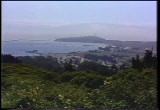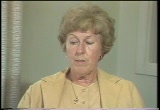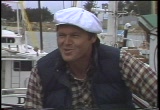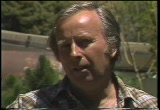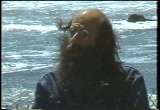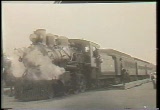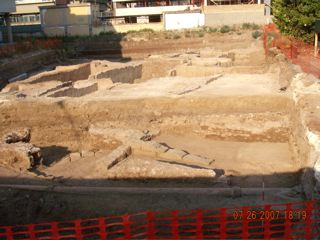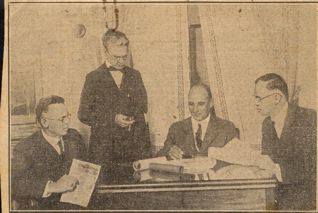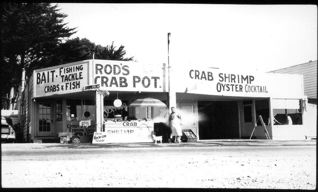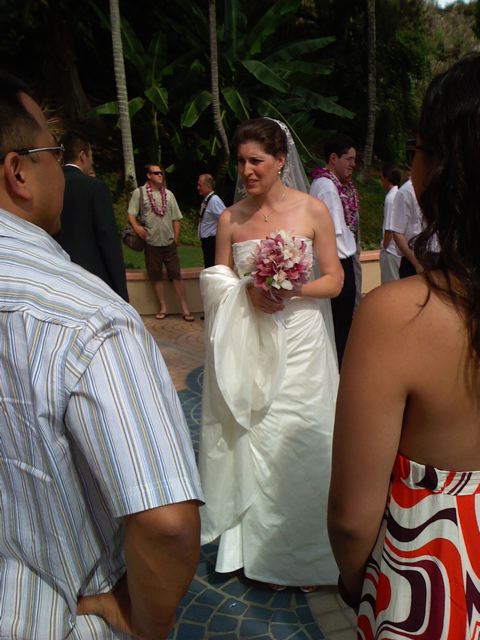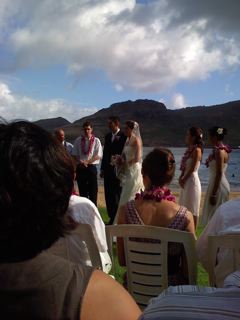Click on the link below to view the 60-minute Coastside documentary (1981.)
What I’m Reading…
Not only is it thought-provoking to re-visit the short, intense lives of murdered President JFK and his Attorney General brother RFK– but there are many “I didn’t know that” moments in this book by David Talbot, the founder of San Francisco-based Salon.com. One example that shines a light on the conspiracy angle: A Texas publisher whose last name was Dealey reprimanded the brothers for being too soft on Cuba–and he told them so in colorful language.
[In case you forgot: Oswald (wink-wink) or whoever engineered the killing of JFK, chose Dealey Plaza as the place for the shooting]
Most intriguing are the similarities you can’t miss between then and now–I’m referring to the roguish CIA and the gung-ho-ish military. Without writing about today’s news, Talbott’s story, that takes place in the 1960s, proves that the bureaucracy and rigid military establishment do not change their ways with the inauguration of a new president.
For me, the book does bog down at times, just when I’m so anxious to read more of the good stuff– and although I love adjectives and understand their importance, I wish there hadn’t been so many on each page–I don’t mean to be so critical because I do admire the detail work.
In Rome, Whenever They Dig Around, They Find A Villa…
1924: Moss Beach Postmaster R.Guy Smith
Photo: In 1924 the Committee of California Postmasters met in San Jose. L-R: George Hughes, San Bruno; J.E. Cawgill, San Carlos; Charles A. French, Brentwood, and R. Guy Smith, Moss Beach.
1970: Longtime Coastside Postmaster Suicide
Raymond Guy Smith, 82, well-known former postmaster of Moss Beach, was found dead in an upstairs bedroom at his home on California Street in Moss Beach. The Sheriff’s Office declared his death a suicide.
Known as Guy to everyone since coming to Moss Beach in 1912, Smith was postmaster for 40 years until 1958, also doing business in real estate and insurance.
R. Guy, a native of Charleston, Arkansas, was listed in “Who’s Who in California.
His body was discovered by his nephew, Elbert Starbuck of Chatsworth. Starbuck had been caring for his uncle who was dying of cancer.
Starbuck told authorities that Smith, a bachelor, didn’t want anyone living with him so Starbuck was sleeping in a camper outside the home. Starbuck was only allowed in the house to prepare his uncle’s meals.
Deputy Timothy McHenry said Smith had shot himself in the chest with a .32 calibre Colt automatic pistol which he kept under a pillow to protect himself.
When he retired in 1958 at age 70, R. Guy Smith was the oldest California postmaster. He began his career in 1918, the third in his family. His grandfather had been postmaster in Boreman, West Viriginia in 1871 and his father postmaster in Dahoma, Arkansas in the 1890s.
Two years before he retired, R. Guy was named “Postmaster of the Year” in California. In 1927 he was the first postmaster ever to fly to a national postmaster’s convention, taking with him an inch-thick bundle of air mail.
He was interned at Skylawn Memorial Park.
1962: When Half Moon Bay Was A Very Small Town…
From the Half Moon Bay Review, 1962
“Coastside People View Program on Alcatraz Island”
“Helping to whoop it up recently at the Alcatraz Island Frontier Nite were many citizens from the coastside, all guests of Mrs. Anne Howe, proprietor of the House of Doors on San Mateo Road in Half Moon Bay. Among those present were the chief of the Half Moon Bay police, Donald Pearman and his wife; Manuel G. Sousa, postmaster, with his family; Mr. and Mrs. Gino Granelli of the Half Moon Bay Inn with daughter Judy and guest Claire Byrne of the Intermediate School; Dante Pompati with is entire family; Mr. and Mrs. Si Moyer with Mr. Eddie Andreini and fiancee; Mr. and Mrs. Jack Pedeuboy; Mr. and Mrs. Louie Tucker.
“Wagonmaster duties were shared by Warden Blackwell and Mrs. Howe, with the honor guest being Marshal J of TV fame. All western props were frunished by Mrs. Howe, and despite the unseasonable warmth, the hosting group and Mrs. Howe wore full Western regalia. Entertaining were Louise O’Neal and Bob Grey of Half Moon Bay playing accordion and guitar; and there was a Boy Scout troop who did several Indian dances. The grand finale of the show consisted of a male group done up as dance-hall girls, which brought down the house. Thanks to Helen Doherty, president of the Alcatraz Woman’s Club, all went smoothly, and the entire cabaret show was a howling success, said many of the spectators.
“An unexpected highlight of the evening was a surpise presentation to Anne Howe of a Certificate of Honorary Membership in the Alcatraz Woman’s Club, in appreciation of all her continuous efforts in their behalf over the years.
“A further surprise was the knowledge that the pilot of the launch which brought people to and from the “rock” was an old friend and near neighbor of Jack Pedeuboy’s uncle, William Britton of Cazadero, where he goes to hunt in his free time. Jack learned this while he and Louie Tucker were riding the launch back and forth to cool off on the warm evening.
“Mrs. Howe was thanked by those who participated in the entertainment program; those who visited the prison island from the coastside.”
Long Gone: Rod’s Crab Pot
We Went To A Wedding in Kauai: Meet Danielle
The “old” Coastside where everybody talked Italian (7)
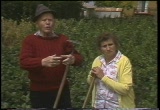 But the Depression didn’t stop Rina and Italo Pacini from having good times. On Sunday nights their friends congregated at a ranch house belonging to Dante Dianda and John Patroni. “There was no television, no radio. We made our own music and danced,” Rina said. At other times they went to a saloon in Moss Beach to dance.
But the Depression didn’t stop Rina and Italo Pacini from having good times. On Sunday nights their friends congregated at a ranch house belonging to Dante Dianda and John Patroni. “There was no television, no radio. We made our own music and danced,” Rina said. At other times they went to a saloon in Moss Beach to dance.
Tragedy struck Miramar when the hot-tempered Pete Gianni was arrested for the murder of a tenant. He spent the remainder of his days at San Quentin Prison.
The “old” Coastside that Rina Pacini knew where “everybody talked Italian” was a place vastly different from today. “My husband and I used to farm lots in El Granada,” she recalled, “and we never felt we needed to ask permission to do so.”
When they were newlyweds, “everybody said we wouldn’t make it because Italo was 15 years older,” Rina said. [As of the early 1990s] they had been together for 58 years.
Ruddy cheeked Italo, who wore a maroon wool sweater and hat while working in the garden behind my house in El Granada every day, was planning to plant beans in the garden when he died at age 93.
The “old” Coastside where everybody talked Italian (6)
Rina remembered that “the artichokes were really beautiful then, not like they are nowadays. The ground was virgin,” she explained. “It was beautiful. You didn’t have to spray. My father never sprayed. We used horse manure, no tractors, just four horses with a plow on the back.”
Trucks picked up the artichokes that were shipped from San Francisco by train to the East Coast. Sometimes when the “chokes” reached New York, the Pacinis were told they had spoiled and the farmers were forced to foot the freight bill. The Pacinis had a tough time making ends meet.
Rina said in 1932, one of the worst years during the Depression, it snowed on the Coastside, and the chokes rotted. One year they “had $1000 in sales but were $9000 in debt. People today don’t realize how bad things were.”
…to be continued…
The “old” Coastside, where everybody talked Italian (5)
Rina’s father set up a vegetable stand half-a-mile north of Half Moon Bay on the “Lopes Ranch.” As a teenager, Rina often worked there. Her future husband “Italo used to stop and visit. One time he gave me a ride. I was walking to Half Moon Bay with a heavy pack filled with clothes I was going to send to my grandmother in Italy.” After that Italo stopped by the vegetable stand regularly.
When they wed in 1931, the “padrone” John Patroni loaned his Cadillac car to the happy couple. Italo ‘s brother, Egisto, who later owned gas stations in Moss Beach and Princeton, drove them to Half Moon Bay–in style–for the wedding ceremony held in the “little” [by little, she meant the old, now gone] Catholic Church.
At their first home in Princeton, Rina and Italo farmed 75-acres in artichokes and sprouts. They rented the land from the Danieri brothers, who lived in what is today the San Benito House on Main Street. Two or three men worked for the Pacinis; Rina did the cooking.
….to be continued…

